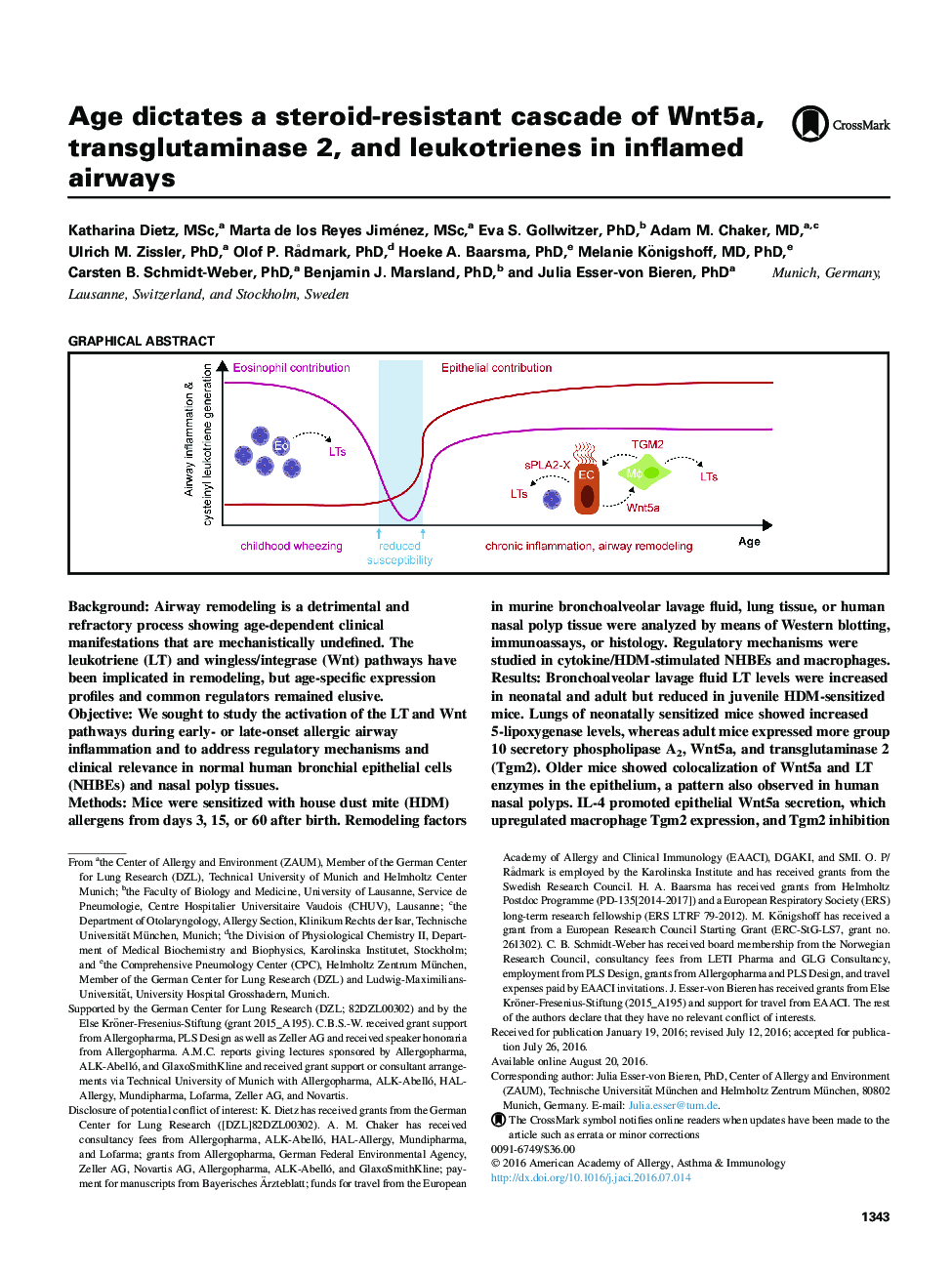| کد مقاله | کد نشریه | سال انتشار | مقاله انگلیسی | نسخه تمام متن |
|---|---|---|---|---|
| 5647132 | 1407077 | 2017 | 18 صفحه PDF | دانلود رایگان |

BackgroundAirway remodeling is a detrimental and refractory process showing age-dependent clinical manifestations that are mechanistically undefined. The leukotriene (LT) and wingless/integrase (Wnt) pathways have been implicated in remodeling, but age-specific expression profiles and common regulators remained elusive.ObjectiveWe sought to study the activation of the LT and Wnt pathways during early- or late-onset allergic airway inflammation and to address regulatory mechanisms and clinical relevance in normal human bronchial epithelial cells (NHBEs) and nasal polyp tissues.MethodsMice were sensitized with house dust mite (HDM) allergens from days 3, 15, or 60 after birth. Remodeling factors in murine bronchoalveolar lavage fluid, lung tissue, or human nasal polyp tissue were analyzed by means of Western blotting, immunoassays, or histology. Regulatory mechanisms were studied in cytokine/HDM-stimulated NHBEs and macrophages.ResultsBronchoalveolar lavage fluid LT levels were increased in neonatal and adult but reduced in juvenile HDM-sensitized mice. Lungs of neonatally sensitized mice showed increased 5-lipoxygenase levels, whereas adult mice expressed more group 10 secretory phospholipase A2, Wnt5a, and transglutaminase 2 (Tgm2). Older mice showed colocalization of Wnt5a and LT enzymes in the epithelium, a pattern also observed in human nasal polyps. IL-4 promoted epithelial Wnt5a secretion, which upregulated macrophage Tgm2 expression, and Tgm2 inhibition in turn reduced LT release. Tgm2, group 10 secretory phospholipase A2, and LT enzymes in NHBEs and nasal polyps were refractory to corticosteroids.ConclusionOur findings reveal age differences in LT and Wnt pathways during airway inflammation and identify a steroid-resistant cascade of Wnt5a, Tgm2, and LTs, which might represent a therapeutic target for airway inflammation and remodeling.
263
Journal: Journal of Allergy and Clinical Immunology - Volume 139, Issue 4, April 2017, Pages 1343-1354.e6